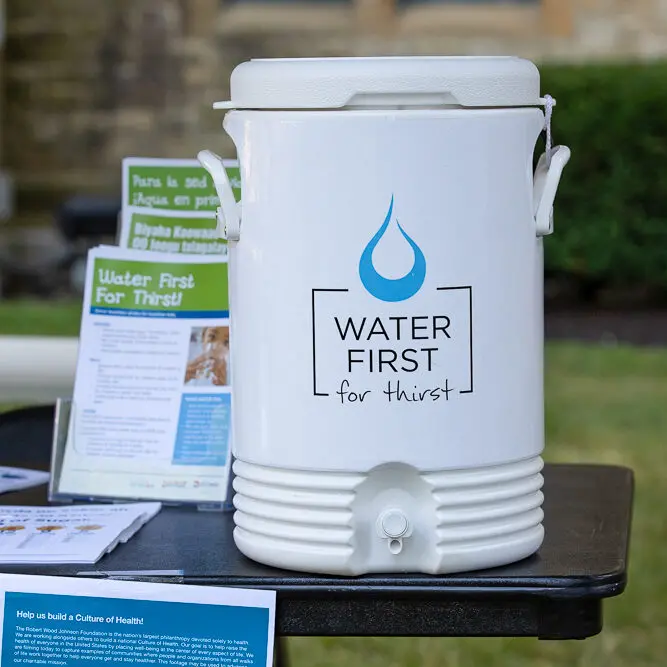This report assessed the sales, nutrition and marketing of children’s drinks, drinks that were marketed directly to children or to parents as drinks to serve to children. We found that fruit drinks and flavored waters that contain added sugars and/or low-calorie sweeteners accounted for 62% of the total sales of children’s drinks in 2018. Only 38% of children’s drink sales were for healthier, unsweetened drinks, such as 100% juice or juice/water blends.
Marketing plays a big part in what kids want to drink. In 2018, companies spent $20.7 million advertising children’s drinks with added sugars. When you see numbers like that, it’s no surprise that children continue to consume sugary drinks. This is a problem. Consumption of these drinks leads to long-term health risks, including cardiovascular disease, type 2 diabetes, hypertension, and dental decay.
Companies do offer healthier options for children, such as juice/water blends with no added sugars or low-calorie sweeteners, and companies do advertise some of these products to parents and children. However, companies continue to spend more on TV advertising of sweetened drinks than they spend on TV advertising of healthier drinks that meet expert recommendations. Given this difference in ad spending, it isn’t surprising that in 2018 children saw twice as many TV ads for sweetened children’s drinks as they did for drinks without added sweeteners.
We also found similar brand names, pictures of fruit, and nutrition claims, such as “good source of Vitamin C” or “no high fructose corn syrup,” on both sweetened fruit drinks and flavored waters and on healthier drinks. For example, images of fruit appeared on almost all of children’s sweetened drink packages (regardless of whether the product contained any fruit juice). This makes it really challenging for parents to know which drinks are healthy options for their children.
Also, about three-quarters of children’s sweetened drinks included low-calorie sweeteners such as sucralose and acesulfame potassium, the same sweeteners found in diet soda, but the front of the packages did not mention this. Instead, these drinks were often promoted as “low sugar” or “less sugar.” These claims appeal to parents who care about reducing sugar in their child’s diet, but the American Academy of Pediatrics recommends that parents do not provide products with nonnutritive sweeteners to children.
Overall, the lack of transparency about ingredients in children’s drinks, coupled with confusing claims and extensive marketing of sweetened drinks, is a problem. Parents should be able to easily find and identify a healthy drink for their child.



